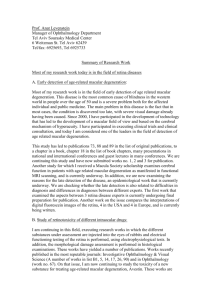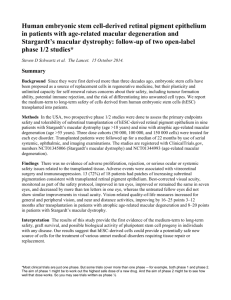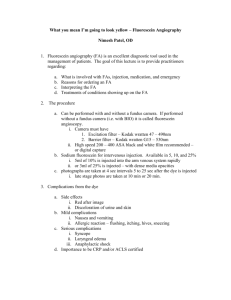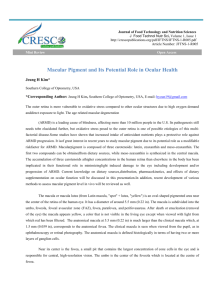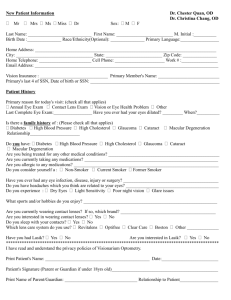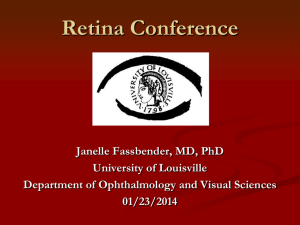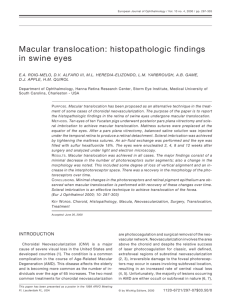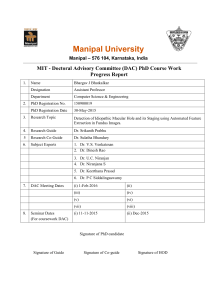Macular Pucker/Epithelial Membrane
advertisement
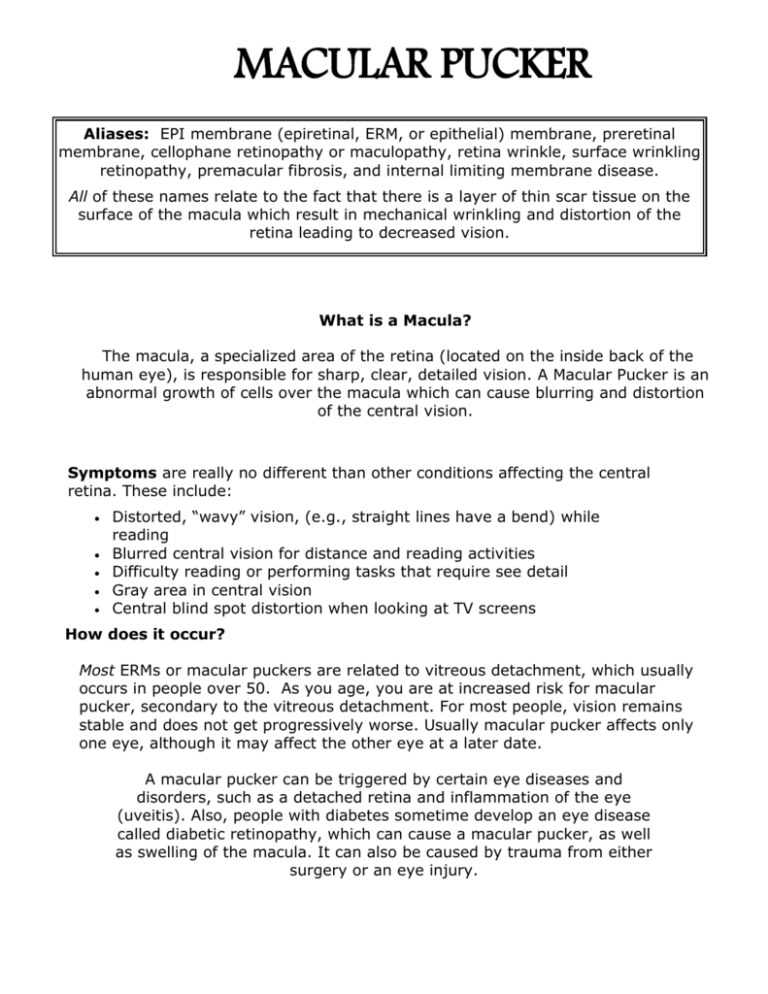
MACULAR PUCKER Aliases: EPI membrane (epiretinal, ERM, or epithelial) membrane, preretinal membrane, cellophane retinopathy or maculopathy, retina wrinkle, surface wrinkling retinopathy, premacular fibrosis, and internal limiting membrane disease. All of these names relate to the fact that there is a layer of thin scar tissue on the surface of the macula which result in mechanical wrinkling and distortion of the retina leading to decreased vision. What is a Macula? The macula, a specialized area of the retina (located on the inside back of the human eye), is responsible for sharp, clear, detailed vision. A Macular Pucker is an abnormal growth of cells over the macula which can cause blurring and distortion of the central vision. Symptoms are really no different than other conditions affecting the central retina. These include: Distorted, “wavy” vision, (e.g., straight lines have a bend) while reading Blurred central vision for distance and reading activities Difficulty reading or performing tasks that require see detail Gray area in central vision Central blind spot distortion when looking at TV screens How does it occur? Most ERMs or macular puckers are related to vitreous detachment, which usually occurs in people over 50. As you age, you are at increased risk for macular pucker, secondary to the vitreous detachment. For most people, vision remains stable and does not get progressively worse. Usually macular pucker affects only one eye, although it may affect the other eye at a later date. A macular pucker can be triggered by certain eye diseases and disorders, such as a detached retina and inflammation of the eye (uveitis). Also, people with diabetes sometime develop an eye disease called diabetic retinopathy, which can cause a macular pucker, as well as swelling of the macula. It can also be caused by trauma from either surgery or an eye injury. Diagnosis is made when an ophthalmologist performs a dilated retinal examination and examines the back of the eye. System of Events: In order to maintain its round structure, the central portion of the eye is filled with vitreous. As a person ages, this gelatin-like substance begins to shrink and contracts towards the front part of the eye. As this shrinkage of the vitreous progresses, the retina can become overexerted, resulting in microscopic damage to its inner surface. When the vitreous separates itself from the macular area, there are normally no negative effects, but when there was a firm attachment that's been removed, superficial irritation triggers a healing response to occur. The retinal cells then spread outward to help the “healing” process along the surface of the retina. This “healing” response causes the thin layer of scar tissue referred to as a macular pucker. Treatment: In many cases when minimal vision loss occurs, no treatment is recommended. But, in the remaining few cases, vision loss may impact driving or reading; therefore, a surgery known as a vitrectomy, may be recommended. Basically, a vitrectomy is the removal of vitreous fluid that is replaced with a substitute. __________________________________________________________ Sources: Cassin, B. & Rubin, M. L. (Ed.). (2006). Dictionary of Eye Terminology (5th ed.). Gainesville, FL: Triad Publishing Company. Clayman, C. B. (Ed.). (1994). The American Medical Association Family Medical Guide (3rd ed.). New York: Random House. Epiretinal Membranes/Macular Pucker. (n. d.). Eye Centers of Florida. Retrieved July 8, 2010, from http://www.ecof.com/florida-lasik-fortmyers/epi_retinal_membranes_macular_pucker_retina_center/epi-retinalmembranes-macular-pucker.html Information about Macular Pucker. (n. d.). Mama's Health. Retrieved July 9, 2010, from http://www.mamashealth.com/eye/macpuck.asp Macular Pucker. (n. d.). Vitreous-Retina-Macula Consultants of New York. Retrieved July 6, 2010, from http://www.vrmny.com/pe/mp.html Compiled by Charlotte Conner, M.Ed

